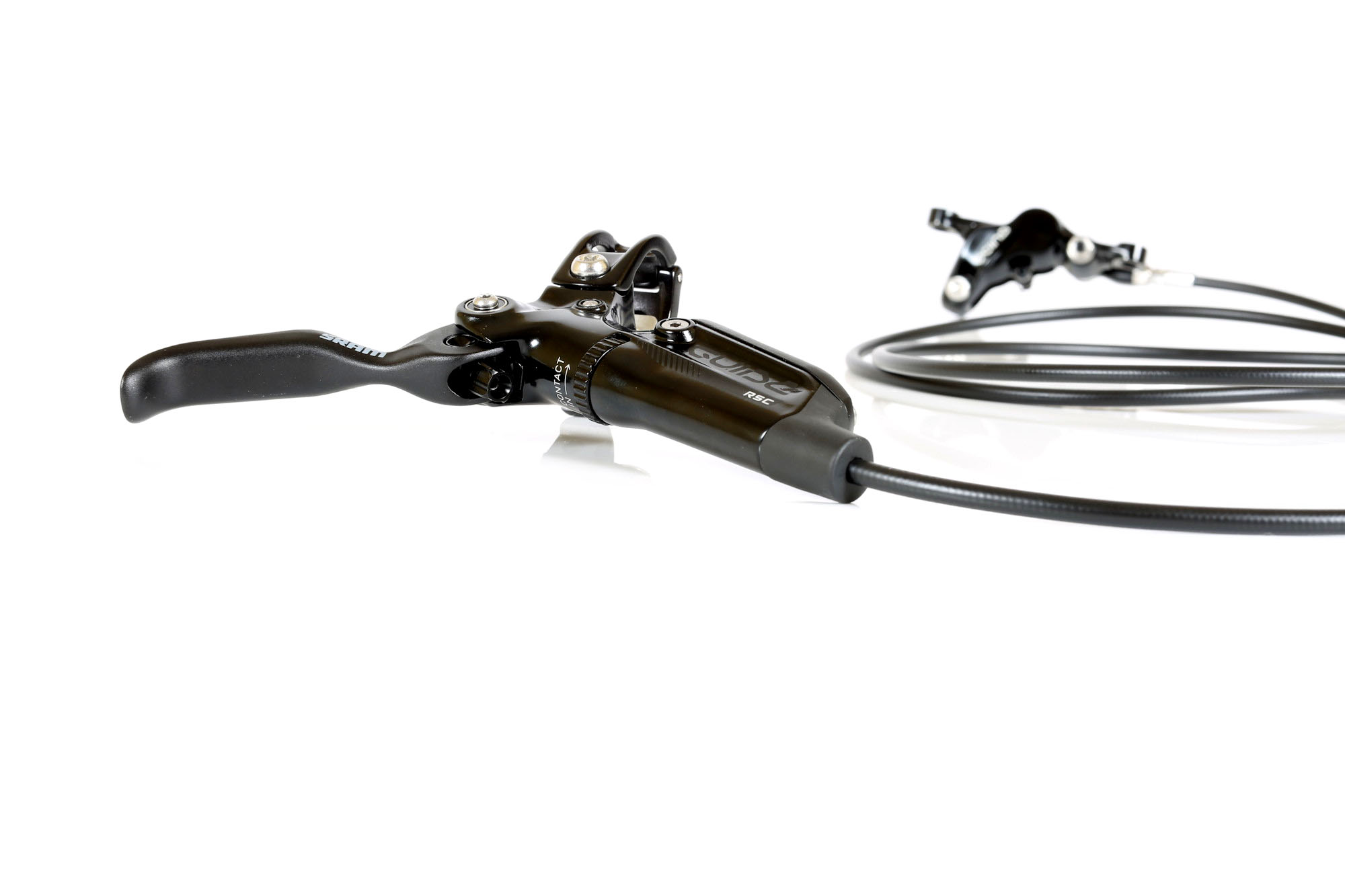Cutting to the chase, SRAM/Avid’s run with the Elixir series of brakes over the past few years has been up and down. We’ve ridden plenty of good sets, but reliability has not been a strong point and consequently we saw a lot of brands move away from SRAM OEM spec (take Specialized for instance). But now SRAM are looking to put that all behind them, with the new Guide series of brakes.
If you’re thinking that the Guide lever body has a similar profile to the old Juicy series of brakes, then you’d be partially right. SRAM have moved away from the notoriously air-sensitive Taperbore reservoir system to a far more conventional reservoir design, ala Shimano, which should cope with the odd air bubble without going into an inconsistent meltdown. Look beyond the reservoir configuration and you’ll find that the Guides are a world away from the Juicys of yesteryear.

There are three variants of the Guide brake; the RSC version we have here puts all of SRAM’s latest braking innovations on display. The R stands for reach, which is adjustable using the large forward-facing dial on the lever blade. No longer do you require dexterous child fingers to twiddle the reach, and the problems with the adjuster fouling on other bar mounted levers, which sometimes occurred with the Elixirs, are gone.

The C stands for contact point. Spinning the round dial on the lever body gives you control over the amount of lever free stroke before pad engagement. Again, it’s far easier to use than the is-this-actually-doing-anything in-line system found on the Elixirs.

Finally, the letter S stands for SwingLink. The lever blade does not directly drive the master cylinder on this model of the Guide brake – instead, the lever actuates a separate link that then pushes the piston. What this accomplishes is a variable rate of leverage (much like Shimano’s servo wave), moving the four brake caliper pistons quickly at the start of the stroke, then more gradually deeper in the lever throw. The idea is speedy engagement, with better modulation of the power once the pads are on the rotor. Speaking of the rotor, SRAM have brought in a new disc pattern called Centreline, which aims to remove the warbling magpie sound effects that accompanied braking with the Elixirs.

On the caliper end of the line, you’ll find the exact same four-piston as graced the Elixir Trail series brakes. This end of the system never had an issue, so it has been continued on. The other models of brake in the Guide series are the Guide RS (no contact point adjustment) and the basic Guide R, which has a simpler lever construction without the SwingLink or bearings on lever blade pivot.

We’ll be testing these in the coming months, so we’ll soon find out if the Guide can lead SRAM’s brakes to the top of the market. Pricing is $239/end, excluding rotors.
